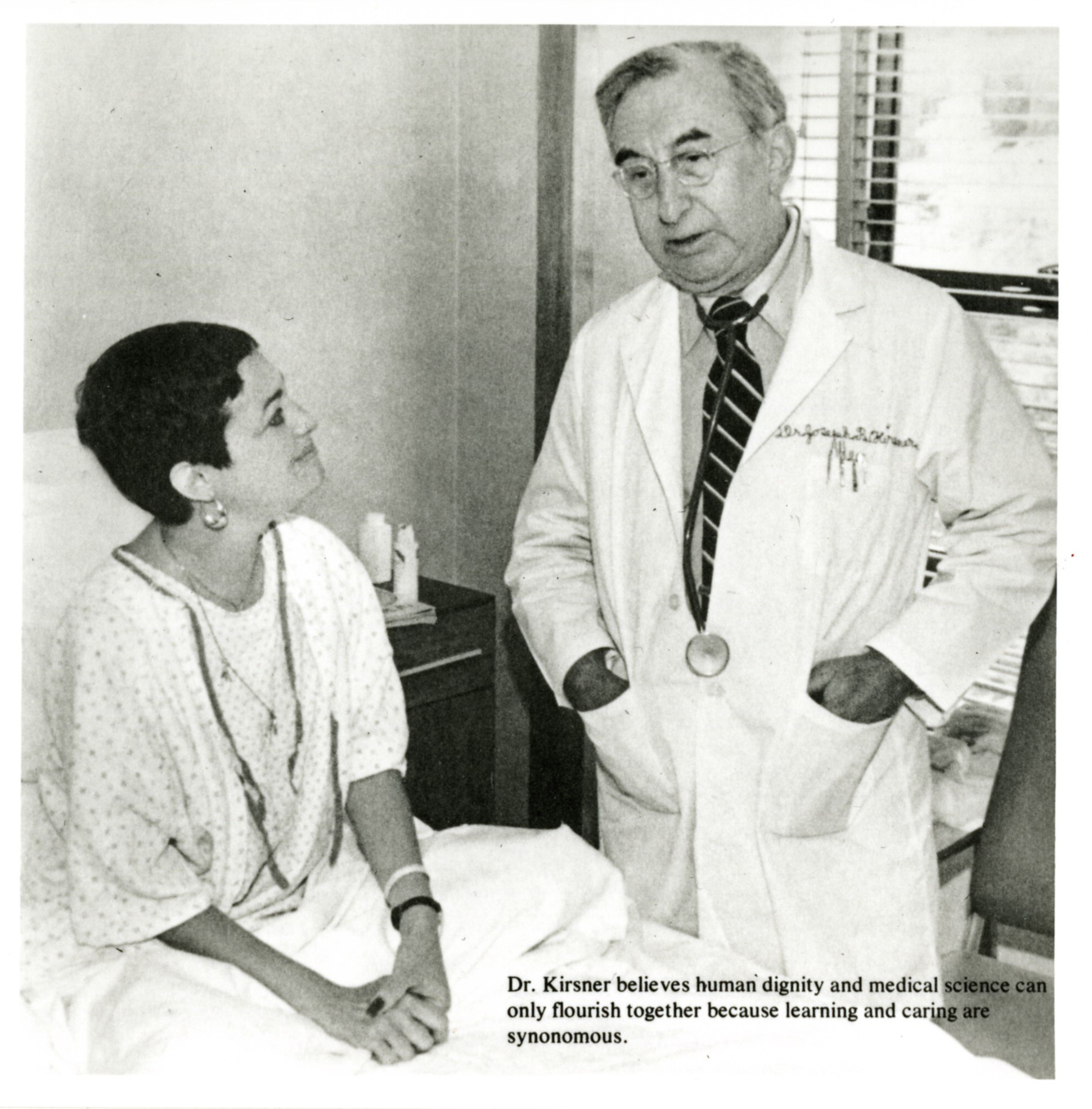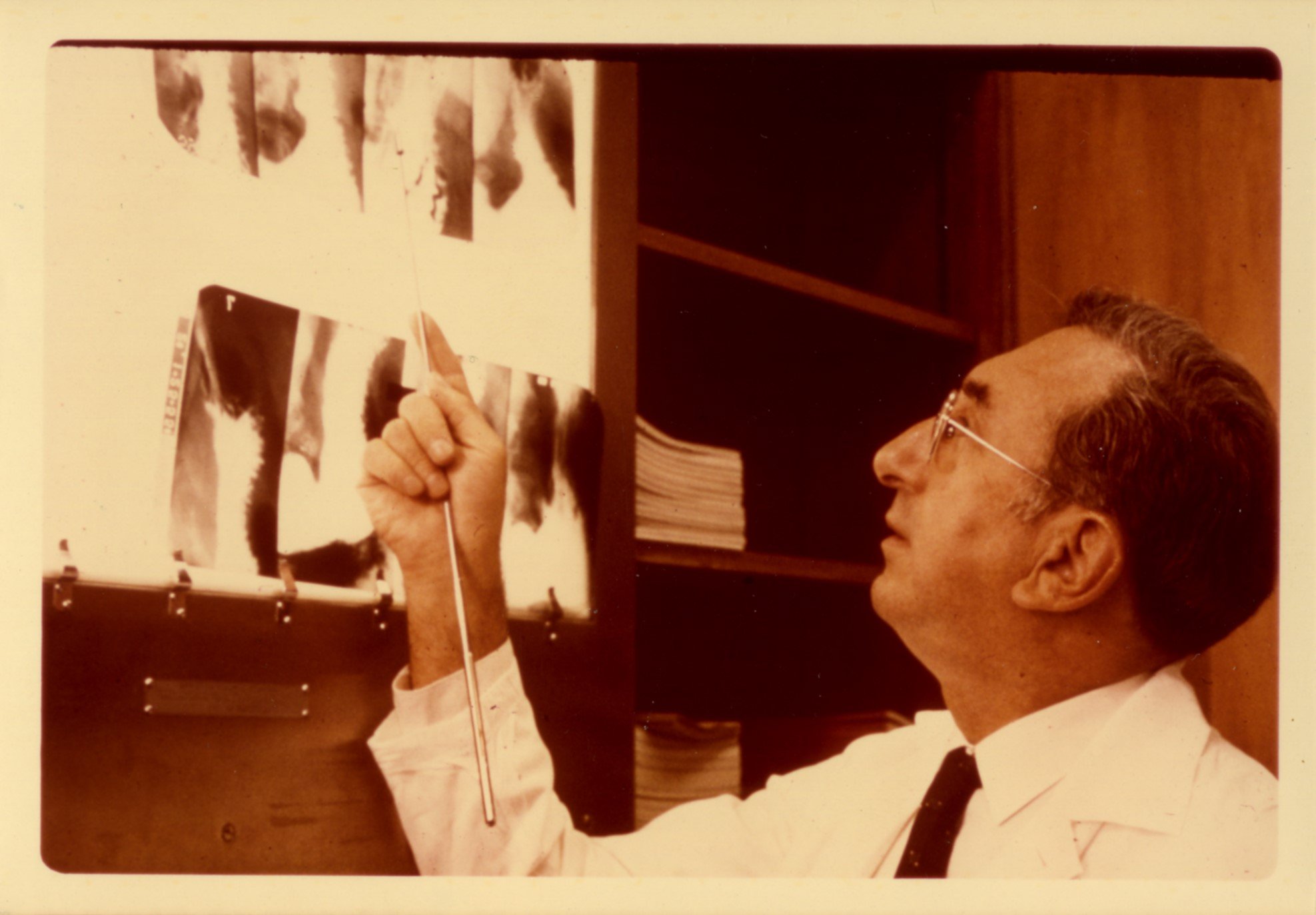Patient Care
As a doctor, Kirsner focused on providing excellent patient care to each patient he treated. “My principal mission became excellence in the care of the patient. The patient was the goal for everything that we did. If we did research, it would eventually evolve into a new therapeutic procedure, a better way of taking care of a particular problem, and the patient would benefit.” Kirsner, 2012. Regardless of financial status, complexity of the issue, degree of illness, or any other factor, Kirsner treated each patient with care, respect, and devotion. His office and fellow doctors knew of Kirsner’s approach to patient care and were expected to serve patients at the same level of care as him.
In 1960, Kirsner wrote one of his best-known and most cited papers, “The Treatment of the “Untreatable” Patient. Originally published in the Illinois Medical Journal by the Illinois State Medical Society, this paper challenged the idea that a patient was ever “untreatable.” Kirsner argued that most “untreatable” patients were not untreatable but were reflective of larger issues within the medical field. A lack of time, money, and patience contributes heavily to a lack of good patient care, but so can a lack of knowledge. In 1960, doctors still had much to learn and were unaware of how to treat all ailments. They would deem someone “untreatable” due to a gap in their knowledge.
“It is in the skilled and devoted care of the hopelessly unbeatable that the doctor rises to his greatest heights as a true physician, as a “fellow human being, and as a friend,”; offering thoughtful attention, cautious encouragement, and sympathy to the patient, understanding, and solace to the family; and facilitating the quiet departure of the fatally ill with proper spiritual consideration and with dignity. We often do not appreciate fully how communicative we are as physicians in our unguarded facial expressions, in the subtleties of our attitudes, the nuances of our remarks, and, even more, through thoughtless comments or failure to express ourselves adequately. L. J. Henderson’s sage advice was, “In the practice of medicine, do as little harm with words as possible.” To this, I would add: “Provide as much hope and reassurance with words as is reasonably possible.” We can do much for our patients by this simple but vital approach”
Joseph B. Kirsner, MD, PhD
In 1990, Kirsner stated in the summer edition of Medicine on the Midway that “all patients desire the same things - kindness, respect, and medical skill. “They want a doctor who treats not just the illness but the patient with the illness,” he said.” (page 3). Taking note of the patient's emotional state, understanding their problems and concerns, knowing what past care they have had, and showing a genuine interest in patients can do more to help than simply giving antibiotics or providing surface-level care based only on medical research.
"After nearly 70 years in the practice of medicine," Kirsner wrote in a 2002 essay for the Journal of the American Medical Association, "I cannot condone the diminished sensitivity of physicians to patients." In 2003, Kirsner wrote “The Treatment of the “Untreatable” Patient, revised.” 43 years after the original paper, Kirsner reflected on what he had written and expanded upon his earlier work. Improvements in medicine have brought about new understandings and treatments for gastroenterology and other fields of medicine, but the journey is “about individual human illness, its neurological, immunological, and genetic dimension.” Mental well-being is just as important as physical well-being for a patient to become well again. There are examples within the paper of patients with severe issues of ulcerative colitis. After months of “therapy, the optimistic approach, and the strong nutritional and psychosocial personal support…” the patient recovered almost 100%. Kirsner was able to grow as a doctor through his medical understanding and treatment plans, his understanding that care encompasses all aspects of a person's road to recovery, and he made sure to practice and preach treating the person, not just the disease.
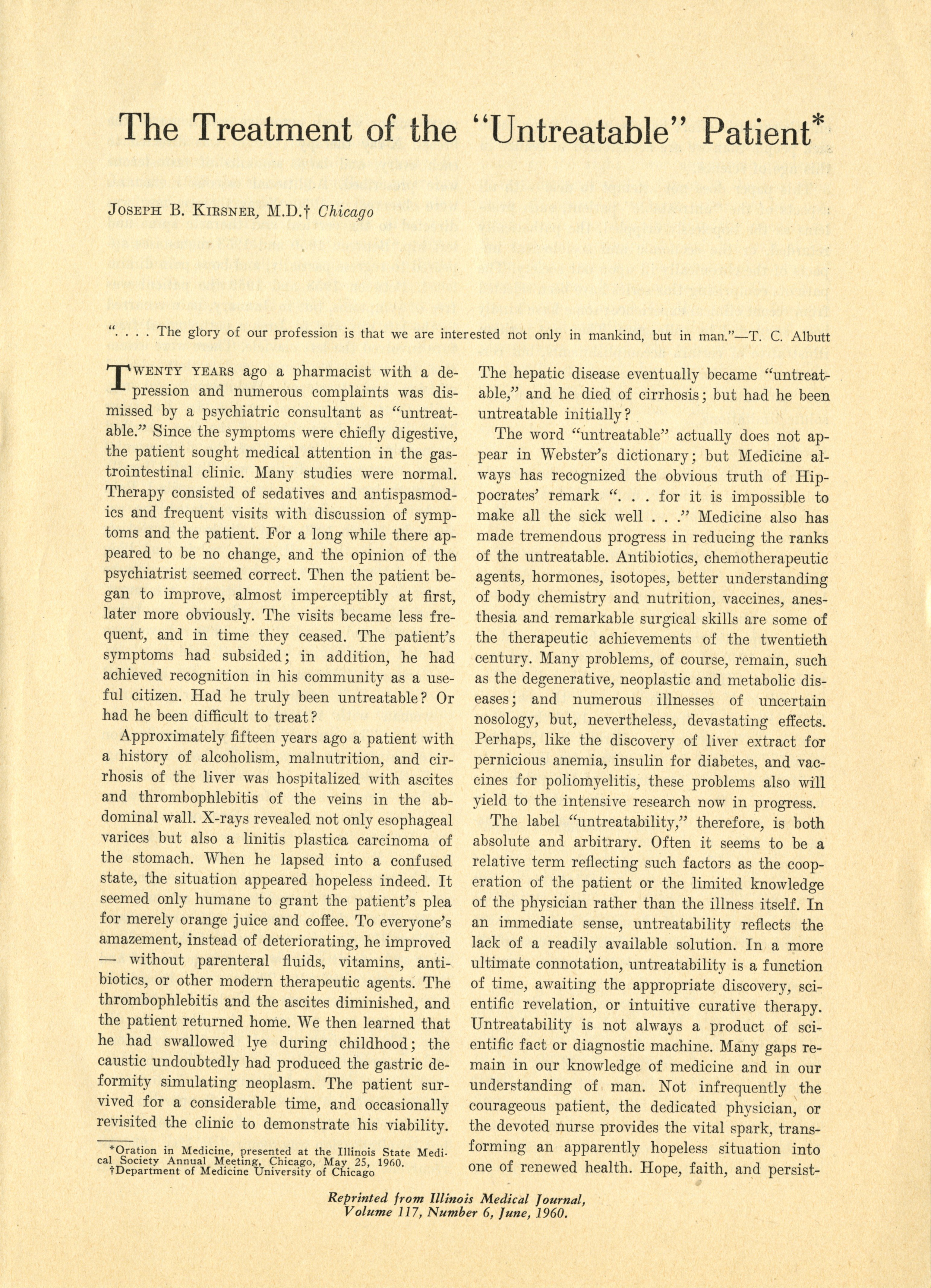
Kirsner, Joseph B. Papers, Box 31, Folder 3, Hanna Holborn Gray Special Collections Research Center, University of Chicago Library.
Kirsner's original article supports caring for patients and treating the person, not just the disease.
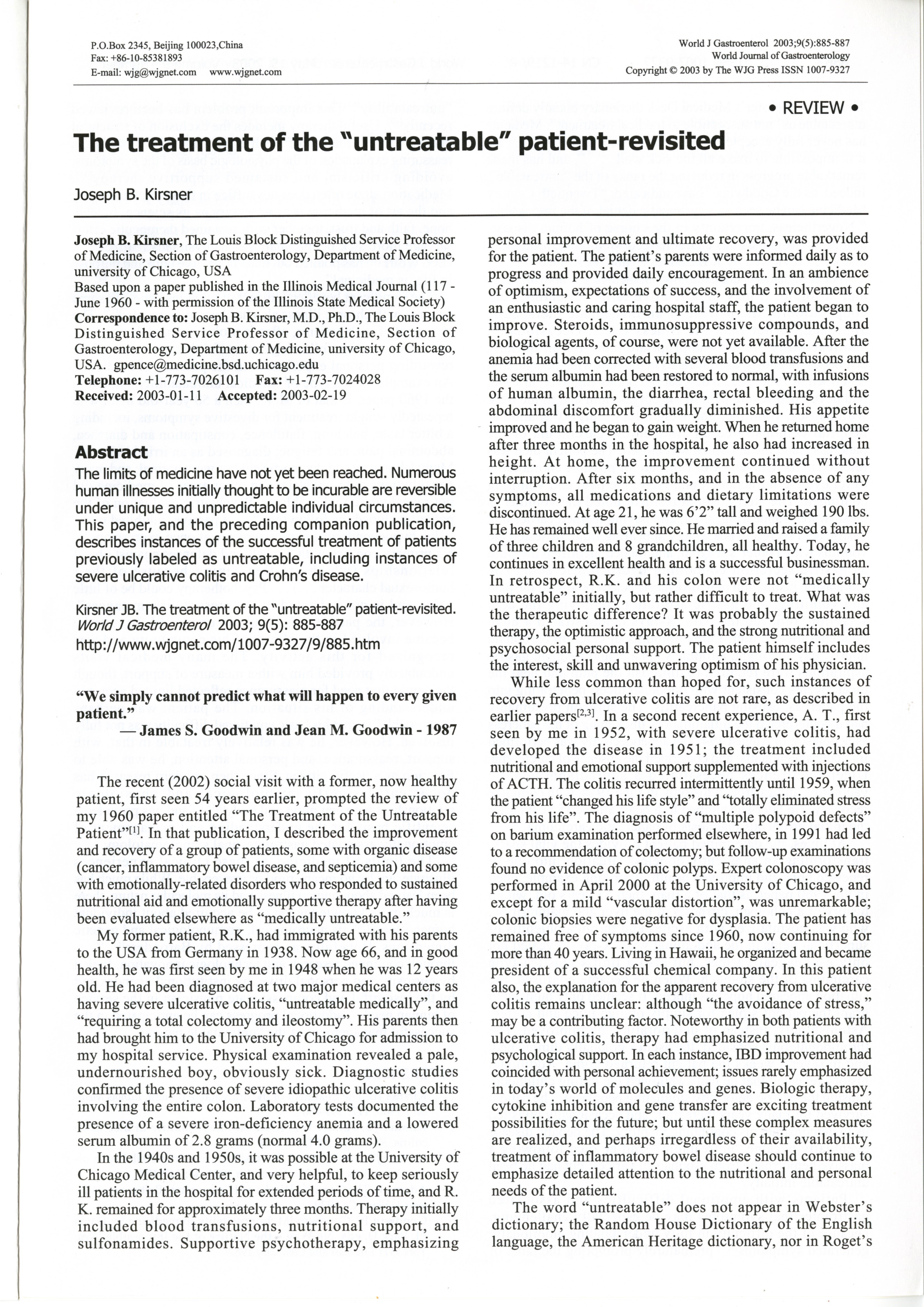
Kirsner, Joseph B. Papers, Box 55, Folder 2 Hanna Holborn Gray Special Collections Research Center, University of Chicago Library.
Kirsner's follow-up to his original article continues to support caring for patients and treating the person, not just the disease.
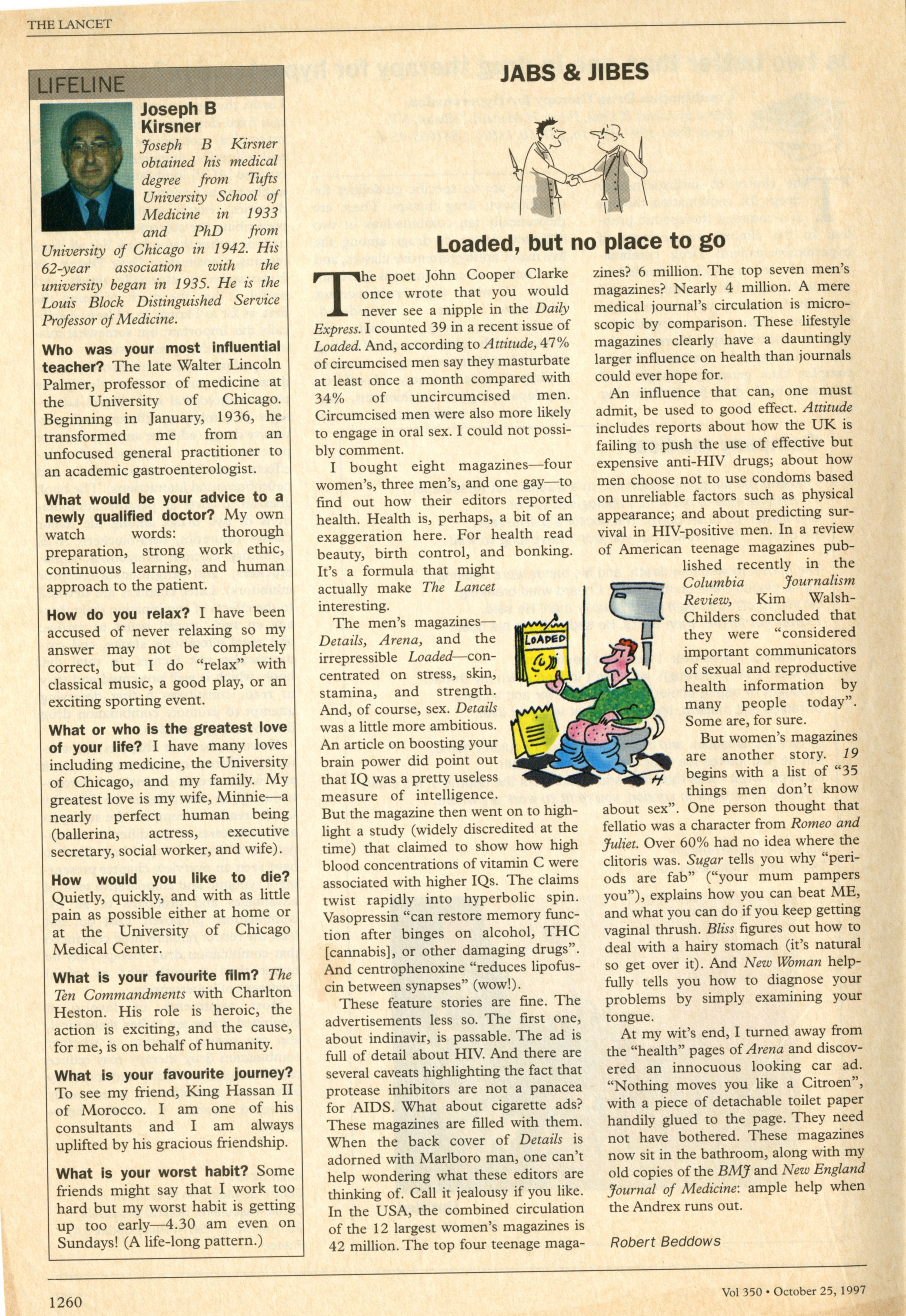
Kirsner, Joseph B. Papers, Box 1, Folder 2 Hanna Holborn Gray Special Collections Research Center, University of Chicago Library.
This short interview highlights what mattered most to Kirsner: patient care, his work, and his wife, Minnie.
